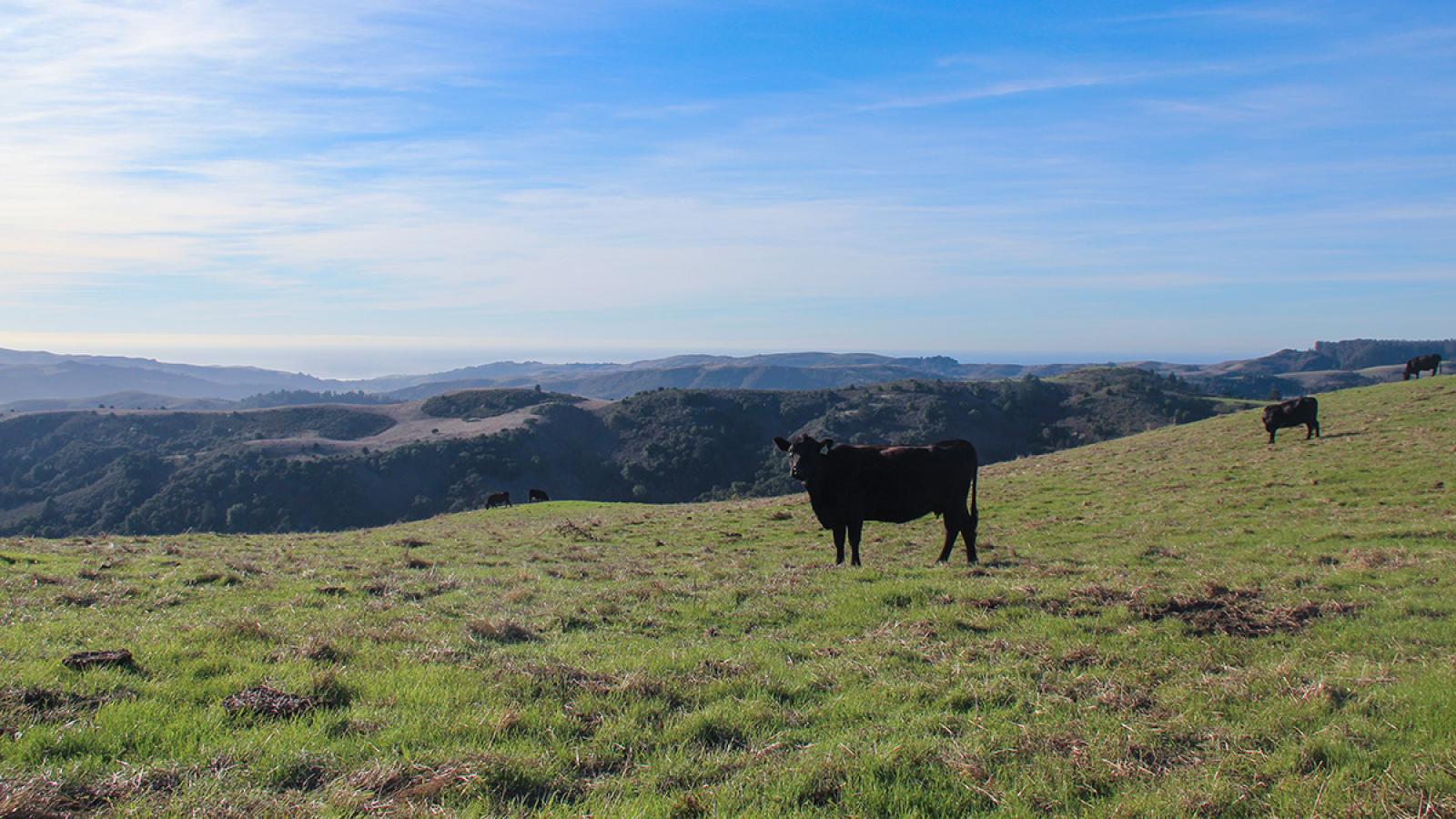Rain makes the grass grow. As California’s drought continues, Midpen staff and the small-scale ranchers we work with as part of our Conservation Grazing Program on the San Mateo County Coast, are closely watch the changing conditions. Our mutual goals are to not only support viable agricultural use of the land, as our coastal mission states, but also to use cattle as a land management tool to help achieve our conservation goals.
Coastal grasslands and the community of native plants and animals they support can benefit from periodic disturbance they evolved with to help prevent loss of biodiversity to introduced species, shrubs and forest. These disturbances were historically provided by herds of now-extinct herbivores, natural fires and Native American burning practices. Today, conservation grazing with cattle can play that role in a way that can be managed through adjustments to number of cattle, duration and location of grazing.
In March, we asked our grazing tenants to reduce their cattle on Midpen rangelands by 25 to 50 percent (depending on individual site conditions) by the end of April. We will re-evaluate the grasslands in May to determine if further reductions are warranted.
“Most ranchers had already made reductions voluntarily because they see what’s happening on the land,” Midpen Rangeland Ecologist Lewis Reed said. “A huge part of rangeland management is matching your cattle stocking rates to available forage so that the grasslands are performing their important biological functions as watershed lands and plant and wildlife habitat.”
Midpen policies do not allow ranchers to provide supplemental feed to their cattle beyond what the landscape can support. Appropriately placed water troughs and wildlife-friendly fencing help move livestock around and contain them to areas where conservation grazing is desired and beneficial.
“We won’t increase the number of cattle on the landscape again until environmental conditions change and the rangeland is producing sufficient forage to justify that," Reed said. "It doesn’t necessarily happen immediately when we start receiving fall rains.”

